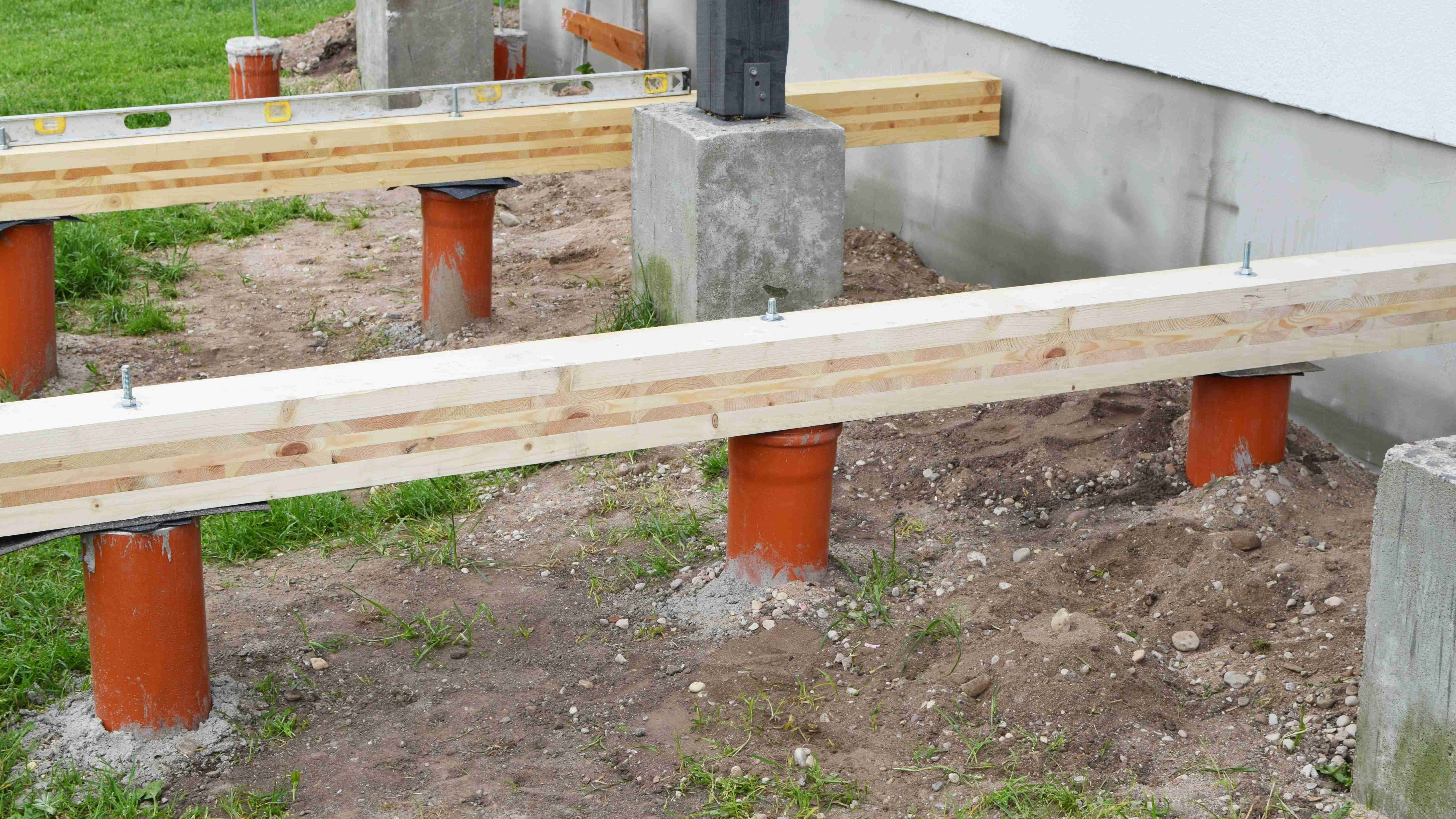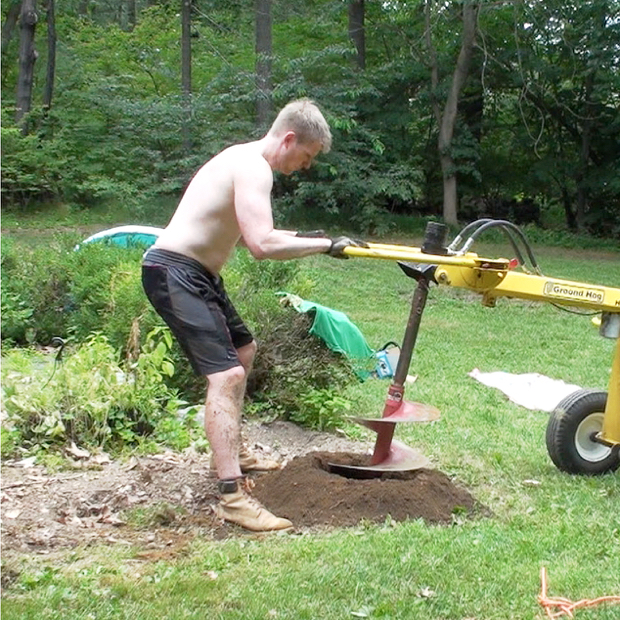Deck Footings Introduced: Comprehending the Secret Components of a Reputable Deck Structure
Wiki Article
Professional Tips for Installing Deck Footings to Assistance Your Outdoor Area
When it comes to developing a deck, one of the most essential elements to think about is the installation of correct footings. These grounds are the foundation upon which your exterior space will relax, offering security and support for years to come. What precisely does it take to set up deck footings correctly?Relevance of Correct Deck Grounds
Proper deck footings are essential for making certain the security and long life of your outdoor area. Without solid and properly set up footings, your deck might end up being unsteady, leading to safety dangers and costly repairs.
Along with security, appropriate deck footings additionally add to the long life of your exterior room (Deck Footings). Grounds that are created and created to stand up to the elements and dirt conditions in your area will certainly help avoid the deck from changing or working out gradually. By guaranteeing the grounds are properly sized and installed, you can minimize the risk of damages to the deck framework, extending its life-span and decreasing the need for costly repairs or replacements

Choosing the Right Sort Of Grounds
When selecting the suitable kind of grounds for your deck, it is very important to consider variables such as soil conditions, regional structure codes, and the overall style of your exterior area. The kind of footing you choose will certainly play an essential role in making certain the stability and longevity of your deck.One common sort of footing is the concrete footing. Concrete grounds are suitable for a lot of dirt problems and supply exceptional support for decks. They are commonly set up below the frost line to avoid changing and settling due to cold and thawing cycles. Another choice is helical piers, which are ideal for areas with unsteady dirt or high water tables. These piers are screwed right into the ground and offer strong assistance for the deck.
In many cases, you might require to utilize customized grounds, such as stack grounds or deep foundations, if you are constructing a multi-level or big deck. These grounds are created to distribute the weight of the deck over a larger area, guaranteeing security and preventing sinking or resolving.
Before selecting a kind of ground, it is important to consult regional building ordinance and guidelines to guarantee compliance. Furthermore, consider the style and planned usage of your outdoor space. Elements such as the size, shape, and load-bearing needs of your deck will certainly influence the kind of footing that is most appropriate.
Preparing the Ground for Footing Installation
To effectively prepare the ground for footing setup, it is vital to evaluate the dirt problems and take needed actions to make sure stability and resilience of the deck. The initial action is to excavate the location where the footings will certainly be set up.As soon as the area has been dug deep into, the following action is to portable the soil. This can be done making use of a plate compactor or by utilizing a hand meddle. Compacting the dirt aids to get rid of any kind of gaps or air pockets, which can result in clearing up and instability over time.
After useful content condensing the dirt, it is important to lay a layer of crushed rock or crushed rock at the base of the excavation. This will give water drainage and help to prevent water from merging around the footings, which can bring about disintegration and instability.
Step-by-Step Overview to Putting Up Deck Footings
After correctly preparing the ground for footing installment, the next step is to begin the process of setting up deck grounds. This step-by-step guide will offer you with a clear understanding of how to install deck grounds for your outdoor area.Determine the place: Beginning by noting the settings of the deck grounds utilizing risks and string. Make sure that the areas line up with the style and design of your deck.
Dig the openings: Utilize a blog post opening digger or an auger to dig the holes for the footings. The depth and size of the holes must be in accordance with local building regulations and the specific needs of your deck layout.
Degree the holes: Use a level to ensure that the holes are dug to the proper depth and are degree with each various other. (Deck Footings)
Add gravel: Place a layer of gravel at the base of each hole to improve drainage and protect against the wood from rotting.
Put the grounds: Position the footings into the holes, making certain they are level and plumb. Make use of a level and a determining tape to make sure accuracy.
Secure the footings: Pour concrete right into the holes around the footings, filling them to the top. Make use of a message level to ensure the footings remain degree as the concrete collections.
Enable time for treating: Let the concrete remedy according to the producer's directions before waging the deck building.
Typical Blunders to Avoid Throughout Footing Installment
One vital aspect to consider during the setup of deck footings is preventing typical errors that can jeopardize the stability and durability of your outdoor area. While deck grounds might feel like a simple and simple component of a fantastic read the construction procedure, neglecting particular variables can bring about expensive repair work and prospective safety threats down the line.
Additionally, overlooking to install appropriate water drainage actions can cause water to build up around the grounds, causing rot, decay, and the ultimate weakening of the deck's structure. Using the wrong type of footing material or falling short to effectively protect the grounds can endanger their architectural stability.
To stay clear of these errors, it is necessary to consult with an expert or adhere to industry standards to make sure appropriate ground installation. By doing so, you can make certain the security and longevity of your outside room, supplying a safe and enjoyable environment for years ahead.
Conclusion
Finally, mounting proper deck grounds is important for the stability and long life of your outside room. By picking the best kind of footings and sufficiently preparing the ground, you can guarantee a strong structure for your deck. Following a step-by-step overview and avoiding common errors during footing setup will even more boost the sturdiness and security of your Source deck.Appropriate deck grounds are vital for guaranteeing the stability and durability of your outside area. The footings offer as a connection between the deck and the ground, permitting the weight of the deck and its occupants to be dispersed equally right into the dirt.One typical type of ground is the concrete ground. Insert the grounds: Place the footings right into the openings, making certain they are level and plumb. Safeguard the footings: Put concrete right into the holes around the grounds, loading them to the top.
Report this wiki page